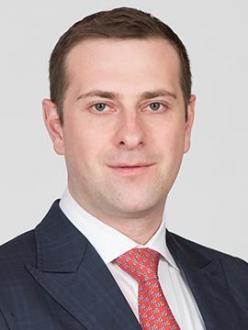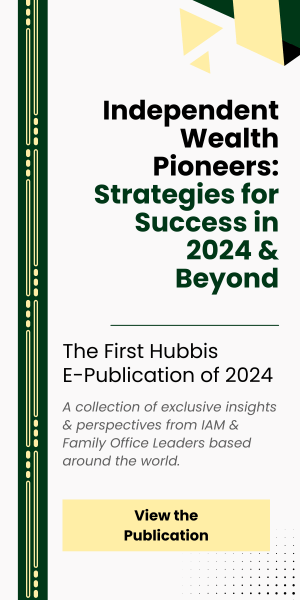Strategy & Practice Management
Survival in Asian Private Banking: The Art of Gaining and Retaining Millennials

Dr. Silvio Struebi of Simon-Kucher Global Strategy Consultancy
Mar 20, 2019
It is well acknowledged that the founder generations that have propelled the economies of Asia to their dramatic growth are either retiring or passing away, leaving trillions of dollars of wealth to younger generations, many of whom are also creating their own private wealth with new ventures and smart investments. Hubbis and Simon-Kucher & Partners, a consulting firm specialising in marketing, pricing, and sales, gather 15 wealth management experts for a private, off-the-record, thought leadership discussion to deliberate how private banks and wealth managers can gain and retain these younger generations of clients.
The panel’s key observations:
Loyalty is elusive
Hubbis’ co-host for the discussion was Simon-Kucher & Partners, a global, mid-sized consulting firm focusing on marketing, pricing, and sales. According to a survey recently conducted by Simon-Kucher, some 60 percent of the HNW millennials that are either directly engaged with private banks or stand to inherit wealth are not entirely satisfied with their/their family’s wealth managing banks. The results were derived from markets including Hong Kong, Singapore, Australia, China, the US, and the UK and showed similar findings across the board.
Intergenerational retention is problematic
A leading European banker commented that from his long experience in private banking in Switzerland and other global markets, such as Asia, clients do not tend to stay with the bank from one generation to the next. Banks need to actively implement measures to retain the next generation – serving the entire family holistically is a prerequisite.
Chinese millennials demand seamless interaction
In the vast and rapidly expanding Chinese ‘wealth’ market, a large number of people in their late 20s and early 30s have amassed fortunes of over 100 million US dollars through new businesses. They have extremely demanding expectations in terms of rapid interaction with private banks, which often have cumbersome legacy systems and onboarding processes.
For smaller firms, these challenges are also great opportunities
Smaller private banks and wealth management firms may find the lack of allegiance to traditional banks and advisers is a great opportunity for them. If as predicted, 90 percent of the younger generations quit the global, brand-name banks their parents have traditionally used, the exodus will present a huge opening for smaller banks and advisory firms.
But who will chase this market?
This presents a stumbling block, as the older, established relationship managers (RMs) will not necessarily commit their time and resources to chasing future potential clients for their banks, as they would prefer to concentrate on the clients they have in hand and other low-hanging fruit.
Connecting across the generations
Whether a bank or a third-party advisory firm, such as a global fiduciary or law practice, it is essential to reach out as energetically as possible to the entire family, where feasible, rather than only to parents and founder clients. This can help improve the general lack of trust that the younger generations tend to display about the traditional bank choices of their parents.
ESG rules
Environmental, social, and governance (ESG) and impact investment principles are key attributes to convey to the younger generation of existing or potential clients. This will also help boost current activity levels thanks to a wider paradigm shift, as even the older generations are gravitating to ESG principles and even philanthropy.
Discretion or risk management?
In some ways, the efforts private banks are making in striving towards more discretionary portfolio mandates are somewhat outdated. The younger generations believe they can do much more on their own and might prefer conversations about risk rather than alpha-chasing portfolio management. Future generations are not necessarily going to want the old style of investment solutions.
Segmentation, learning
Understanding exactly where clients fit into certain segments and remaining up to date about their behaviour patterns is vital to tailoring dialogue and solutions to those clients.
Polishing up your USPs
Like all innovative organisations, banks need ‘wow factors’ that are specifically designed to attract and retain the next generations. Lessons learned from big tech and consumer tech companies can be translated to the private banking context.
Be transparent
To achieve optimal recognition and pricing, banks must be transparent. Younger generations are more inclined to investigate pricing and use websites or social media to gauge value.
Competence must rise
To appeal to future generations and maximise returns from the current client base, RMs must become more sophisticated in understanding needs and providing advice. They need to take account of the big picture, e.g. investment alternatives, compliance, and tax, and also consider working with third-party specialists where appropriate. Transparency is essential.
Growth might mean consolidation
Since banks will have to focus intensely on profitability in the future – just look at how banks’ share prices have languished for many years – consolidation might be necessary in order to achieve the right balance of AUM growth and profits enhancement.
Focus on value
Banks must understand and communicate value to their clients in order to be valuable to them, to retain them as clients, and maintain a share of their wallets, especially in view of the many current and anticipated competitors.
The discussion
The private, off-the-record discussion began with some observations from the co-host Simon-Kucher & Partners, represented by Silvio Struebi, Managing Partner for Hong Kong and Singapore, and Jan Engelke, Managing Partner for Switzerland.
In their introduction, Struebi and Engelke gave a brief overview of Simon-Kucher, which is a mid-sized consulting firm and global leader in marketing, pricing, and sales consulting. Roughly half of the firm’s revenues come from monetisation projects across all industry types. The other half is generated through sales, strategy, and product management initiatives.
The value quest
Struebi explained that the firm has around 1,300 employees across the globe in 38 offices and supports all kinds of financial institutions and companies from many other industries. “In a nutshell,” said Struebi, “when we work with banks, we focus on the value proposition, how banks should serve clients, and what they must offer them. In regard to the future generation of clients, we explore their different requirements. This is the key topic of today’s discussion.”
Struebi added that Simon-Kucher’s work with the banks and other clients also focuses on sales processes. “In this industry, digital channels are becoming increasingly important, and it is crucial to understand their impact on your business, how to engage effectively with clients, and how to bundle digital tools with traditional products.”
The third core element of the company’s consulting work, representing around 50 percent or more of Simon-Kucher’s revenues, is the topic of pricing. “We help financial institutions monetise their services and also master their discount challenges. The underlying approach here is to understand behaviour,” Struebi said. “We always focus on client behaviour, using data to really understand why a client is acting in a certain way and come up with better strategies.”
Turning back to the topic of the day, Struebi noted that the firm had recently conducted a survey about the requirements of the younger generation, the millennials. “We found that 60 percent of HNW millennials with private banking potential – those who already have significant assets and those who will inherit wealth – are not entirely satisfied with their and their family’s existing banks. We surveyed the markets in Hong Kong, Singapore, Australia, China, the US, and the UK, and everywhere we saw the same picture, highlighting the importance of this discussion today.”
The challenge: Appealing to the younger generations
A senior European banker picked up the baton, remarking that at his bank, clients do not stay from one generation to the next. “We know from our experience that when you lose the parents, you lose the children, unless you make a huge effort to get to know them and successfully maintain the relationship. Our current clients might be very committed to us, but this respect is not generally passed on to the children. If someone has a magic formula to change that, please advise me because, for us, this has been a really tough challenge.”
A China expert gave his insights. “Some clients in Beijing, Shanghai, and the Cantonese delta think and behave like older money, demanding value, specific terms, and a dedicated representative with whom they can do business. These I would term ‘Bloomberg’ clients. The second category of people are more ‘BBC’ clients – aware of many of the key issues of the day, open to be charmed, and potentially ready to follow you. So, to tap this segment, you need a sufficient number of qualified bankers and organised activities.”
The third grouping in China is what he termed ‘Animal Planet’ clients, which are people living in the beautiful scenery of Tibet or Mongolia, working as mine owners, developers, or even ‘Bitcoin farmers’. “They can make 50 or 100 million US dollars in one year,” he reported. “First, you charm them, then present your information in an intelligent, understandable way, but ultimately, they always ask you how they can get their money out of China, at which point, I leave them to do whatever they intend to do. In short, China is a very tough market.”
Chinese millennials demand nifty institutions
Another expert commented that some of Chinese entrepreneurs in their late 20s and early 30s have amassed wealth of at least 100 million US dollars through business. “These types,” he said, “have a vastly different perspective. For example, they may store all their bio-data in their phones and often complain about how slow client-onboarding is at many banks, which have so many legacy systems and processes that these clients are put off. When I spoke to such individuals, I started to understand that the millennials see things very differently. Right from the onboarding process, they typecast you as being a particular sort of bank.”
He added that the older-money second and third generations are often more conservative. They are used to having, not making money, so it is important to understand exactly which type of younger client you are dealing with.
A China expert countered with her view that the younger generations of Chinese in China and Hong Kong want to be more innovative and brave in terms of their investment approaches, even if they inherited the wealth, rather than creating it. “They are actually quite brave,” she said, “willing to be imaginative and take some risks.”
Feeding off the whales
Another opinion came from a veteran banker who commented that for smaller organisations, continuity is more of an opportunity than a problem. “I hear that up to 90 percent or so of the next generations will leave their parents’ banks, so for us, we are basically targeting that market, namely, clients leaving the major global banks. We see this as a huge opportunity.”
However, he also noted that it does indeed take a lot of time to court these potential clients and the returns take even longer to materialise. “If you are a banker aged 50 or over, it is perhaps not really in your personal interest to invest so much time in the next generations; they are more of a problem for your institution than for you.”
A representative of a global fiduciary and law firm remarked that it is vital for their business to connect to the whole family. “In China,” he said, “the top echelon of Chinese families that my fellow panellist mentioned earlier are quite sophisticated, often run by US business school-educated types and very westernised. It is vital to understand this blend of eastern and western cultures and then be nimble and agile to address their needs.”
Can trust be maintained?
“The younger generation will not usually trust the advisers of the older generations,” another panel member added. “They prefer to be independent, not monitored by their parents, they want to express their own values. They tend to view the traditional banks of their parents and grandparents with some level of distrust. They are also usually more receptive to compliance, having probably been educated and lived overseas.”
Picking up on the onboarding processes, the representative of a leading, brand-name global bank agreed that despite progress towards digital, the major banks remain clogged with manual labour for basic processes. He said the aim is to change that, to achieve rapid digitally-activated documentation and appeal more to the 30 plus market. “Whether they created wealth themselves or whether they inherited it, they all want rapid digital accessibility, but this comes at a cost, and we also have to ensure that we are compliant in all jurisdictions. It is a tight path to walk, but it is definitely the way the industry needs to go.”
ESG and SRI in vogue
Environmental, social, and governance (ESG) investment principles, socially responsible investing (SRI), and impact investment also appeal to younger wealth market clients. “Actually,” said one panellist, “this is not just limited to millennials; it is more of a wider paradigm shift as everyone is becoming more aware of the importance of ESG. However, millennials are perhaps more focused on this and on philanthropy.”
She continued: “The older generation clients I speak to about discretionary mandates tend to be quite happy with our traditional offering. The younger generation, however, tends to say this is not interesting, that they can do it on their own. Some of them even have clubs where they can organise financing among themselves, such as for high-yield, non-rated bonds.”
Another expert interjected, noting that DPM mandates are rather old-fashioned. “If we want to realise the types of returns that future generations desire, we have to recognise that the world has actually changed,” he emphasized. “Eventually, we will need to phrase the conversation more around risk and managing risk rather than chasing returns. Future generations are not going to want the old style of investment solutions.”
Knowing how to slice and dice your segments
Another senior banker from the global brand remarked that a lot of work is being done internally on client segments. “We have spent [so much time] on infrastructure, understanding, and implementing feedback that we are now customising those experiences and continuously learning, then filtering this through the rest of the asset management or insurance or private banking organisation,” he explained.
He also noted that the basic thinking of many millennials is quite different from the older generations. They are more familiar with companies like Amazon, Uber, and Airbnb, so their mindset is to benchmark banks against these providers.
“How good was my account opening experience with this bank vs. Netflix?” he elaborated. “Was I able to highly customise content from the organisation? Why can’t this long-established bank provide that? When we explain that we are bound by regulations or similar frameworks, it does not resonate with them. I feel we have not engaged as well as we should have.” This means there is an opportunity for us, as well as a challenge.
Finding your ‘wow factors’
Struebi then highlighted a survey Simon-Kucher conducted, which showed private banks need to invest more in their USPs. “We call these the ‘eight wow factors’, designed to attract and retain the next generations. We looked at companies in other industries, such as Netflix, Spotify, etc., and learned what best-in-class elements we could transfer to banking.”
The outcome, he noted, is less about making a huge IT investment (which will be necessary at some point in time) and more about the way banks communicate, in order to be very clear about these wow factors. “To achieve this, the banks might, for example, adapt their current culture to their future client base, such as by changing their hiring processes to attract people who would otherwise be comfortable working for a company with a culture similar to that of well-known tech firm’s and hiring them as RMs to improve the entire client engagement process.”
In the future, Struebi says hybrid models will prevail at banks, with clients wanting both the human element of connection but also the convenience of digital. “Banks need the right mix, and to make this happen, they must understand what they need, what they want, and what they want to stand for. It is a mixture between an ongoing market research exercise and a strategy definition project.”
Struebi also remarked that millennials expect a higher degree of pricing transparency from banks. “This is a major challenge,” he commented. Effective pricing communication is essential and must improve. Some banks do a better job at it than others.”
Appealing to the ‘smart’ generation
A representative from a Hong-Kong-based association explained some of the initiatives being launched with private banks to encourage university students to move into private banking and similar fields, such as offering summer internships with some of the leading institutions. “One of the principal goals is to get this generation thinking about private banking as a legitimate option for finance as opposed to investment banking, hedge funds, Google, or startups,” he noted, “and the response has been tremendous. For example, some 750 applications were received in the latest round, competing for 55 positions at these firms.”
Nevertheless, he conceded that follow-through is trickier. “When you tell a 22-year-old that a bank wants to offer them a position as an assistant RM, and maybe in five years they could be an RM, they often seem to think, well, I can go work at that startup my friend is working on, and if we are lucky, we might be millionaires in the next two or three years. So, it is not that easy.”
The panel was asked to comment on a recent survey that indicated that just seven percent of private wealth clients in Hong Kong believe their private bankers or advisers put their interests first.
“I think you have to be very careful how you interpret this kind of study,” commented one veteran banker. “First, let’s go back to the drive towards greater transparency. I think it’s great, as it really forces you to focus on adding value. The clients must know exactly how much is made from them and by whom. Transparency and how you are perceived are essential factors.”
Ethics in question
The question of how ethical private bankers and wealth advisers are today was also raised. “People who give poor advice are not necessarily unethical,” said one voice. “In the past, as an industry, we might have hired people we thought had access to HNWIs, and the question of their actual competence was secondary to the AUM they could bring in. These RMs might give bad advice, but not because they are unethical, more because they do not have the required skills. I would say by far the majority in this industry are ethical.”
However, the industry’s mission must be to ensure that the RMs at these firms also have the core competencies to provide valuable advice or are empowered to work with other colleagues who can.
This drive to greater competence must extend to tax and other compliance topics, said another panellist, noting that the younger generations are even more mobile and multi-jurisdictional than ever before. “Banks can do more in this area, as well as in the broader area of family governance and helping the different generations in terms of their communication. Family governance, tax, wealth planning, cross-border activities, bank accounts in different countries with the same banks, and so on, all need to be addressed. The traditional banks can do better [in these areas] and I am sure the millennials will appreciate this.”
Leverage the expertise available
The role of external advisers was highlighted, with one panellist advising that due to regulatory concerns and potential conflicts of interest between clients and the banks, the presence of a third-party gives a level of assurance that the client was sufficiently well advised on transactions. “Challenges have arisen related to families, such as cross-border taxes, cross-border family members, how to give away funds, philanthropy, all those things, and private client lawyers can be there to help with some of these issues and guide the clients in the right way.”
Another panel member agreed, noting that in the field of fiduciary trust and estates work, third-party advisers are of considerable value. “For example, for a major global bank, we have established an Asia-to-US corridor-type team of bankers, lawyers, accountants, and fiduciaries that meet on a regular basis and work through some of their complex structuring issues and client requirements. The bank has realised that from a fiduciary, legal, and tax and wealth planning and structuring perspective they need help for their HNWI and ultra-HNW clients and family members who straddle, for example, the US and Asia. They realise the client must have the very best impartial independent advice, particularly when dealing with some fairly thorny and complex issues involving tax and other matters.”
Transparency no longer a luxury
A panellist shifted the focus of the discussion back to transparency. “We talked about pricing transparency,” he said, “but there is also transparency on the value side. The younger generations share their opinions in order to make assessments, for example, about the rating of hotels, clothes, restaurants, and other services. I think banks must work on this transparency topic. In the UK market, we have a lot of transparent providers, such as fintechs, which are transparent on both sides, on what they deliver and what the client has to pay.”
The discussion turned to the widespread stagnation of the share prices of banks and private banks, which is a possible indication that investors perceive an overall lack of direction and that this is stifling optimism about banks’ future strategies.
“Of course, we need to look at the industry in segments because many of the competitors in the private banking space are not pure-play private banks,” said one expert. “Their share price might be affected by the performance of their investment bank, their proprietary portfolio, their insurance business, consumer business, whatever. At a global bank I worked for, we generated maybe three percent of the net income of the firm, so whatever we did, it generally had minimal impact on the total numbers and share price.”
Growth and the bottom line
However, he added that now working in a dedicated private banking firm, he believes the market is seeking a clear demonstration of sustainable growth. “We cannot grow slowly or stay where we are,” he said, “because for every dollar of additional AUM, the competition continues to increase, and there are more alternative channels, so the returns on the AUM is falling. Moreover, because of the regulatory framework and the competition for talent in the market, your expense base keeps increasing. The result is we need to grow AUM rapidly to achieve sustainable bottom-line growth, and the implication is consolidation in the industry as there are critical mass issues in every jurisdiction and globally.”
He concluded that of the standalone banks that succeed, the ones that will excel are those that find novel ways of dealing with the competitive and technological changes in the market. “But, realistically,” he observed, “there is no secret answer.”
“For organic growth,” said another veteran banker at the end of the discussion, “you have to hire as many bankers from other banks as you can and hope they bring as much as AUM with them as possible. Inorganic growth means identifying acquisition or partnership opportunities, and certainly, in our case, we are looking at both.”
The final word went to Struebi, who thanked the assembled experts and reiterated Simon-Kucher’s mantra of helping private banks and other wealth management firms improve their value propositions, pricing excellence, communication, and, most importantly, increase their margins. “It is on the value side that this battle will be fought,” he concluded.

More from Dr. Silvio Struebi, Simon-Kucher Global Strategy Consultancy
Wealth Solutions & Wealth Planning
Future-Focused Family Offices – Challenges for Sponsors and Opportunities for the Wealth Industry
Strategy & Practice Management
Why are Most Digital Banks Not Profitable? Global Consulting Group Simon-Kucher Has Some Ideas
Strategy & Practice Management
The Future of Private Banking: Lessons from Big Tech Unicorns, Mainstream Media and Fintechs
Latest Articles






